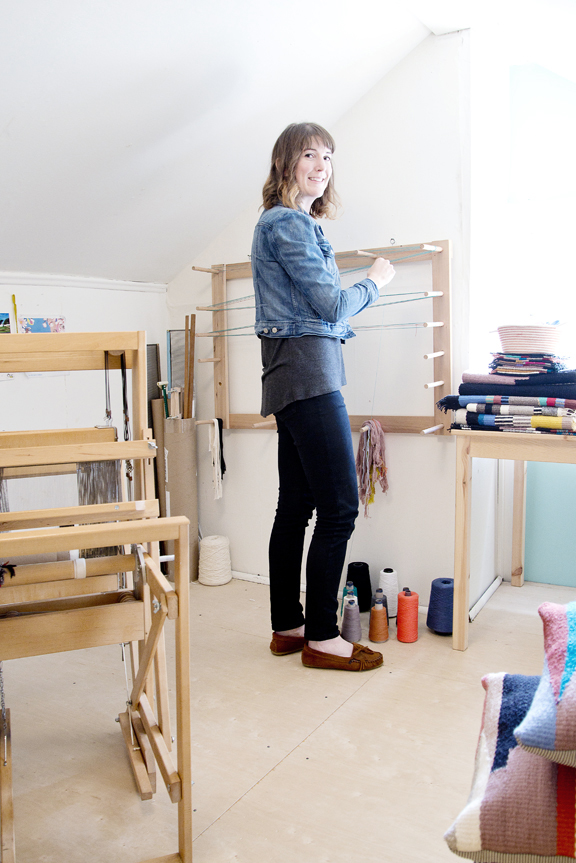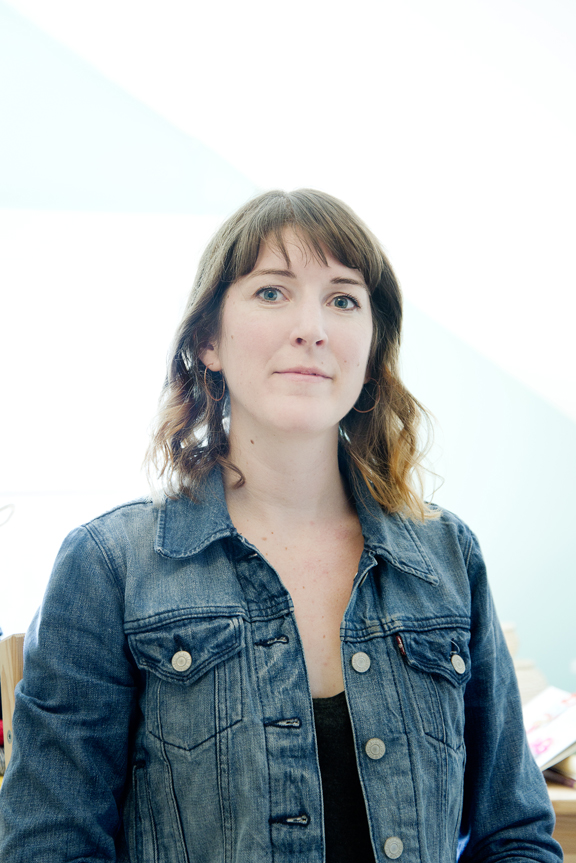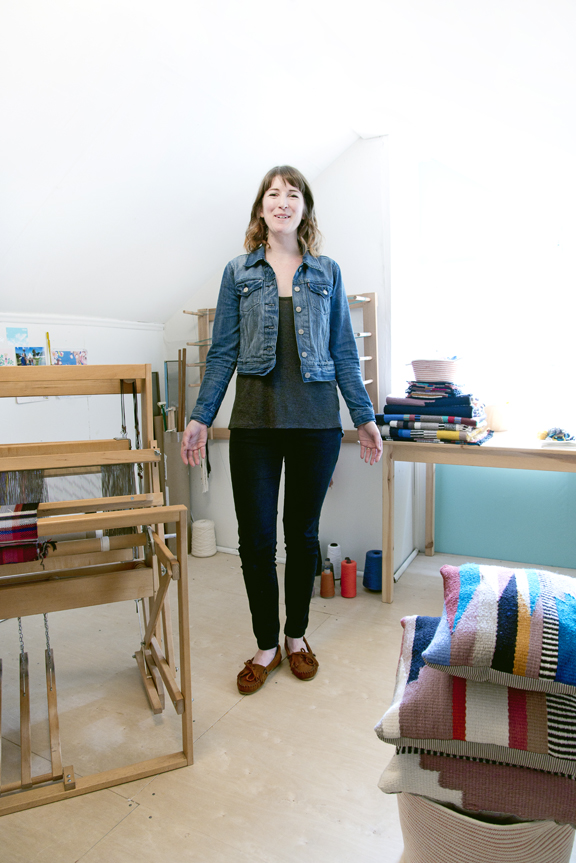Jackie Thomson is the brains and hands behind the bold, striking textiles of Loom Room. With a client roster that includes Oregon Humanities Magazine, TOMS Shoes, YOXI, MySpace, and HGTV.com, Jackie’s on a roll. She started weaving in 2003 while in college studying for a BFA in Graphic Design, and got her start in the creative industry working as an illustrator. These days, she uses her illustration background to develop her weaving designs. We caught up with Jackie after our Women In Design launch party to chat about textiles, mentors and how craftswomen like herself can shake up the design world.

Weaving is such a beautiful discipline, but it also feel like a bit of a lost art. How did you get into it, and what made you want to stick with it?
I took a hand weaving on the loom class in my first semester of college back in 2003. We had this room and hallway that was packed with donated looms. I remember at the time being surprised with how time consuming the craft was, but every time I finished a project I had this huge sense of accomplishment about having made something so functional and beautiful with my hands. I ended up taking a few more fiber arts classes but really focused mostly on graphic design and illustration for the rest of my time there. A few years out of college, and feeling very defeated by the design world, I got reunited with weaving on the loom and have not had a lull since. I just bought my own floor loom last year after a lot of searching. Weaving has turned out to be that art form that has the right mix of everything for me.
You say you use your illustration background to develop your weaving designs. What does that look like?
For my rug designs specifically, the weave structure I use allows for a lot of control of placement of color and design. I draw out all my rug designs ahead of time to play with color, design and overall feel. When you’re weaving on a floor loom you really only see about 6 inches of your weaving at a time. It’s really helpful to have a diagram or sketch of where you’ve been and where you’re headed.
What inspires your designs?
When I was younger I would have said that looking at other weavings for imagining possibilities was a big part of my inspiration, but as I get older and get more comfortable with my own aesthetic I’m learning to trust my instincts more and step away from the computer. I try to approach each weaving collection like it has all the possibilities in the world, and then narrow it down based on colors I’m really loving at the moment, or specific design elements, and then playing around with the sketches and drawings until I’m ready to start weaving. Weaving is such a tactile art form that there are so many things to consider before you even begin.


Who do you consider a mentor?
I started weaving with a wonderful group of women on a weekly basis a few years ago. Most of them have been weaving for upwards of 15 years and are just full of insight and information. It’s a true community of weavers, and everyone has something that they are really passionate about. It’s always really fun to learn new techniques and new ways of looking at a project from them.
Why do you think it’s important for women to have more of a voice in the design world?
Women have a lot more to offer to the design world than they are currently being used for. I think sometimes our society underestimates women in the ability to lead, and cultivate a team that will work together to create great work. The design world often feels like a cool kid boys club because women tend to be more hesitant to talk about themselves or to self promote out of risk of falling into the dreaded bossy or bitchy category. There are a lot of skills, weaving included that are traditionally female crafts, which when brought to the table could open up a whole realm of new possibilities and ideas.
What do you think needs to change in the design field to make it more inclusive?
I think a shift away from making large social events the only way to get into an industry will help include a greater mix of both introverts and extroverts, both male and female. At the end of the day, the more different points of view we’re gaining, the better our designs and insight are into what we’re creating.
Photography by Christine Taylor